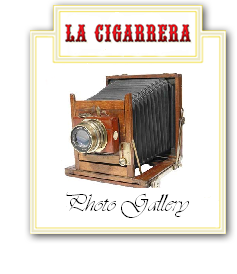Ours Wines
Although originally "Colóm and Company" owned and made various wines, “La Cigarrera” didn't have its own vineyards, and instead used the excellent quality grapes selected from cooperatives and local vine growers who were members of the Denominacion de Origen “Manzanilla de Sanlúcar de Barrameda” and “Jerez Xeres-Sherry”.
The making procces.
The system of making Sherry wines is exclusively lthe same as for Manzanilla, and is known as “Criaderas and Soleras”. This system consists of mixing wines from different harvests, keeping the oak casks that store the wines in rows stacked on top of each other, normally in three rows (it can be more). The barrels in the first row, nearer the floor, are known as Soleras, and the barrels above this are known as criaderas (first, second and so on).
The barrels, whose capacity can be up to approximately 5ll litres, are never filled more than 2/3s, so that there is always a 1/3 empty. The system consists in extracting a 1/3 of the vintage wine for sale, that third is immediately replaced by the 1/3 of the vintage from the barrel above it, and in this way successively (second, third vintages etc), until the Bodega's last vintage with the grapes of the year. The third that is never extracted is what we call 'the mother's third', and it represents the mix of all the harvests that have passed through the wine cellar over the years.
Manzanilla is a unique wine in that it can only be made in Sanlúcar de Barrameda. Its production relies entirely on the local climate and the influence of other important factors such as the “Poniente wind”, the influence of the sea, mists and humidity etc. According to the experts, the wine cellars situated in the “Barrio Bajo”, nearer the coastal waters of the Atlantic, produce better Manzanillas, maybe because of the more intense humidity.
In Sanlúcar, for the making well of Manzanilla, the system differs slightly from that of the “Criaderas and Soleras”, in that, although we mix proceeding wines from different harvests as well , we do it by means of a much larger and more dynamic process. Speaking of criaderas, we speak of classes, these being more numerous, and define the steps within the system of aging of Manzanilla in which the wines go through successive decanting, until they reach the ultimate class, in this case, Solera, from which is extracted the wine now ready to bottle and sell.
There are seven classes or Criaderas, and just one Solera, from which evolves “La Cigarrera Manzanilla” during a process that lasts four or five years, depending on the date of sale, naturally.
For the Manzanilla Crianza we leave the totally fermented grapes of the year's harvest, whose alcoholic graduation comes naturally to rest at between 11 and 12 %, depending on the harvest's weather.
The grapes come into our wine cellars after January, when they are totally fermented and unbundled. Then they are headed, peeled and piped, and by means of the addition of Vinous alcohol the alcohol content rises to 15%, obtaining what we call, “sobretablas”, being distributed finally in casks where they stay for between nine and twelve months, continuing along the different steps of aging (creation) and classes, mixing with the wines of other harvests from previous years.

